
Our Japanese-language reporter learns to appreciate cheap, Japanese conveyer belt sushi.
Our Japanese-language reporter Ikuna Kamezawa is all about trying the local food when traveling, but after eating seven straight meals of curry when she was in India last year, she was more than ready to have something else. Ikuna is no stranger to the different iterations of Asian foods in different countries, but she yearned for a mild meal, so, figuring you can’t go wrong with Chinese food wherever you are in the world, she opted to visit a Chinese restaurant in New Delhi.
Unfortunately, the fried rice she ordered there was so intense on the spices that it was really more like Indian food than Chinese food, so her craving remained unsatisfied. Desperate for a taste of home, she hopped on the net to see if she could find a Japanese restaurant and…as it turns out, New Delhi actually has a conveyer-belt sushi restaurant!
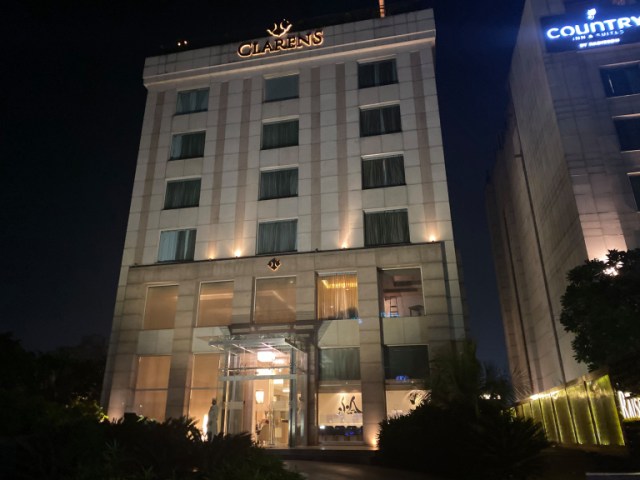
Well, technically it’s in the southwest city of Gurugram, but close enough to New Delhi to be considered part of the metropolis. Relying on maps, Ikuna traveled on a train from the center of New Delhi and upon arrival walked a fair distance in the pitch dark to a seemingly unrelated four-star hotel, Clarens Hotel. It was such a trek that it probably would have been better to take a taxi or electric rickshaw.
Nervously she asked a man inside the hotel with a rather splendid beard where the sushi restaurant was, and he pointed her right to a set of noren curtains just beside the entrance.

The restaurant was called Sushikyo, and the look of its entrance definitely gave a much more high-class feel than a Japanese conveyer-belt sushi restaurant, which, to many Japanese, are considered “cheap” sushi, not luxury at all. The sense was incongruous with Ikuna’s image of conveyer belt sushi, but she peeked inside anyway.
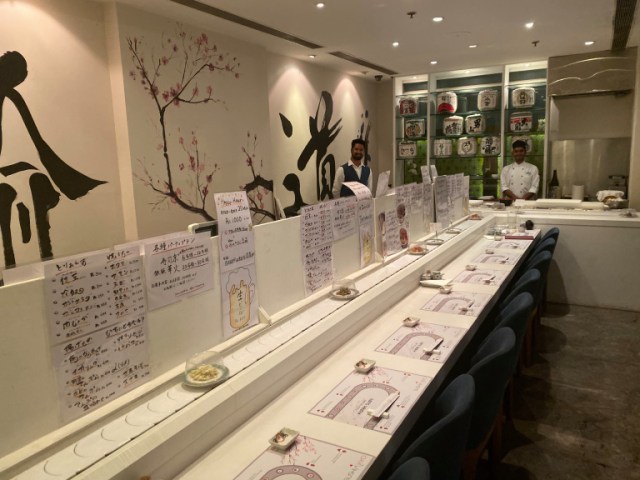
It was definitely a rotating sushi restaurant…but with a much fancier feel!
After taking her seat, Ikuna decided to start things off with a beer, which was brought solemnly in a glass mug. To her surprise, it also came with a Japanese appetizer (called otoshi) in the form of a cucumber and imitation crab salad. In the three months she’d been away from Japan, she’d never expected to find otoshi in India, of all places!
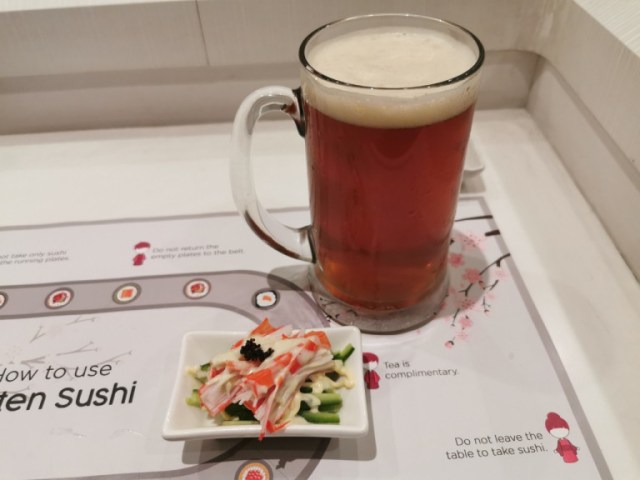
The hot tea in a Japanese tea cup was beyond nostalgic.
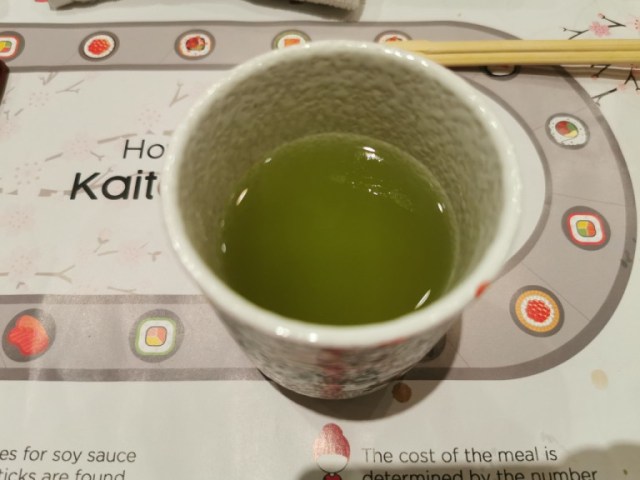
And the miso soup was delightful!
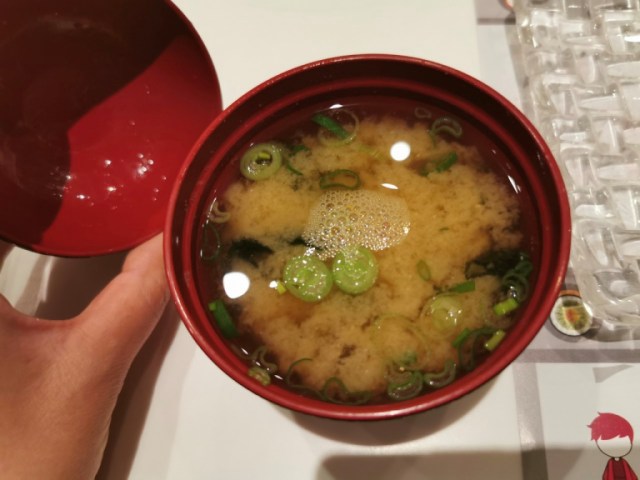
She normally enjoys her miso soup as-is, but since they generously provided some shichimi seasoning, she dressed it up a bit.

The rolled omelette garnished with grated daikon radish was also delicious!

A glance at the menu found that items were listed in both Japanese and English, so at this point Ikuna was reasonably certain that Sushikyo must have had someone working there who was Japanese. Since it’s pretty common for Japanese restaurants to be run by non-Japanese people all over the world, they usually have mistakes and typos on the menu, or the font is somehow strange, or something like that gives it away. But Sushikyo’s menu was very clearly written by someone who has fluency in Japanese.
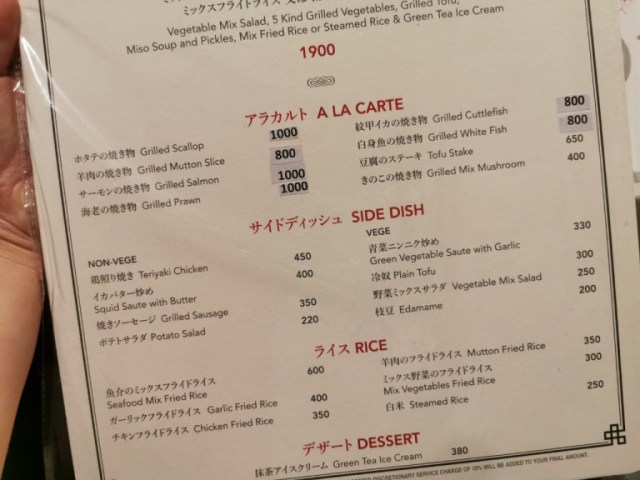
The hand-written menus even had some Japanese jokes on them, so Ikuna became convinced that it was written by someone from Japan.
▼ The recommended side dishes here come in a section labeled “Still hungry for a little more?” (もうちょっと食べる?)
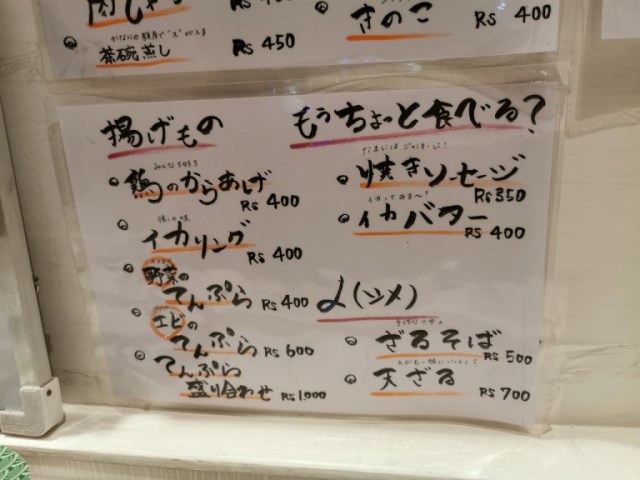
So Ikuna asked the Indian chef who was making the sushi, and as it turns out, there’s a Japanese woman who works in the hotel who helps out with the menu. Sadly, she was upstairs in the members-only bar, so Ikuna didn’t get a chance to say hello. The Indian sushi chef, for his part, said that he learned to make sushi in India, though he expressed a desire to go to Japan one day.
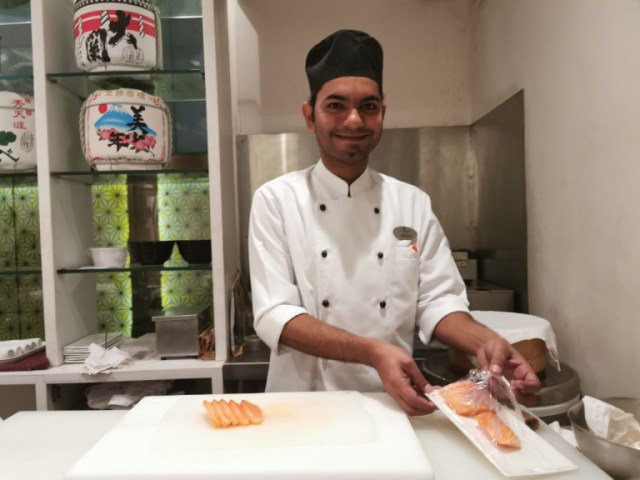
In most respects, this restaurant was completely comparable to a Japanese chain conveyer belt sushi restaurant! They even had plastic plates identical to those use in Japan cruising around on the belt. There was one major difference, however: the only food on the plates were side dishes like salad and vegetables. There was no sushi rotating around the restaurant.
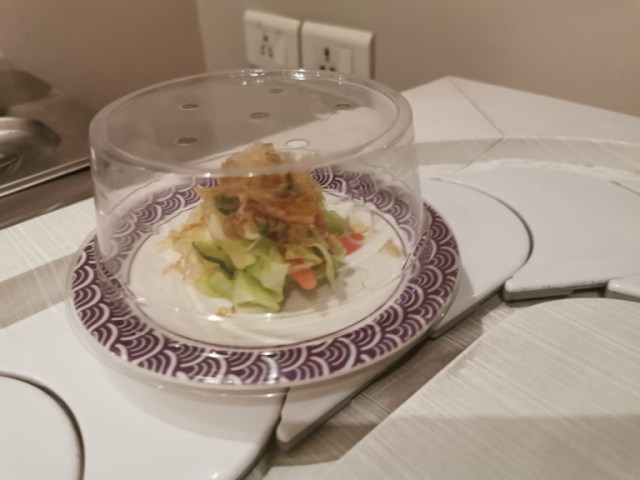
The price of one serving of sushi at Sushikyo was about 200 Rupees (about 280 yen or US$2.72), which is much more than the average plate at a Japanese kaiten-zushi restaurant. Compared to the usual price of 30 Rupees for a plate of curry, 200 Rupees makes sushi a luxury food in India, and with the warm and humid climate of the area, it makes sense from a food-safety and practicality standpoint that they wouldn’t put raw fish on the conveyer belt.
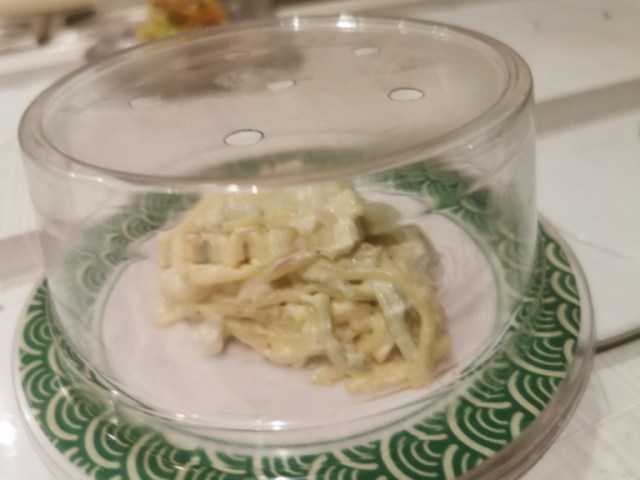
Even so, Ikuna wanted to eat sushi, so she ordered the “Omakase Nigiri Set of 5” for 1,000 Rupees (1,410 yen/$13.60), which the chef skillfully made in front of her.
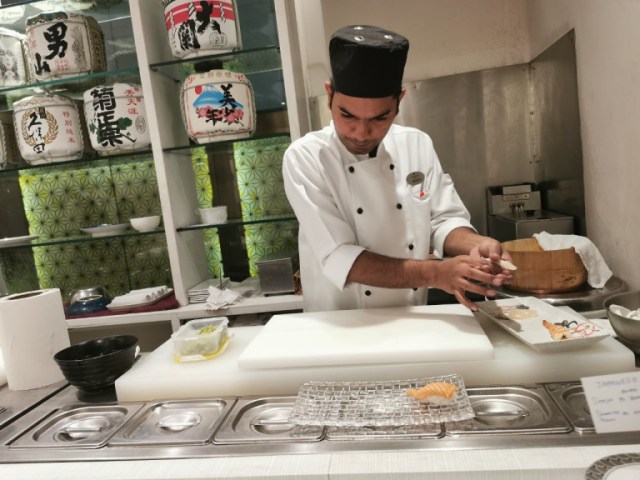
The Set of 5 came with salmon, shrimp, scallop, vinegared mackerel, and a white fish that looked like sea bream. To Ikuna’s delight, the plate also included pickled ginger, a necessary complement for sushi.
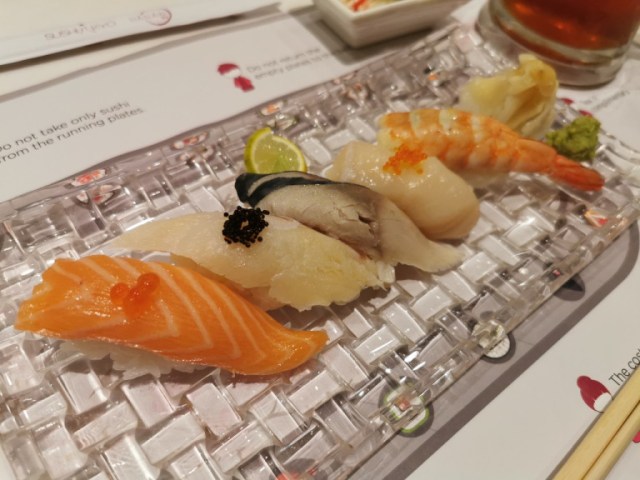
Delicious! Just like a Japanese plate of sushi. Though it was, to Ikuna’s Japanese palate, about the equivalent quality of a sushi platter from a convenience store, she really felt impressed by the restaurant’s ability to produce such authentic-tasting sushi. Perhaps that’s because the Chinese fried rice she’d eaten had such an Indian flair to it, but she was surprised to recognize a distinct Japanese-ness to the flavor of Sushikyo’s food.
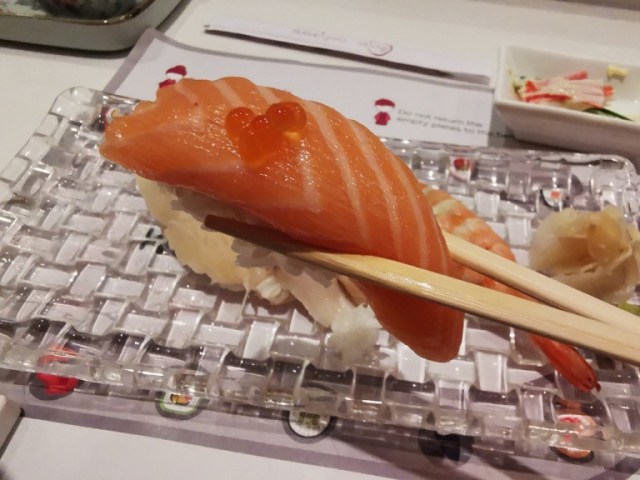
The restaurant did give her a slight sense of incongruity, since Sushikyo’s prices were a little high for conveyer belt sushi, even though their sushi wasn’t technically rotating around the restaurant. But, on the other hand, it also gave her a sense of appreciation for conveyer belt sushi restaurants in Japan being able to provide such cheap and tasty sushi for the masses.
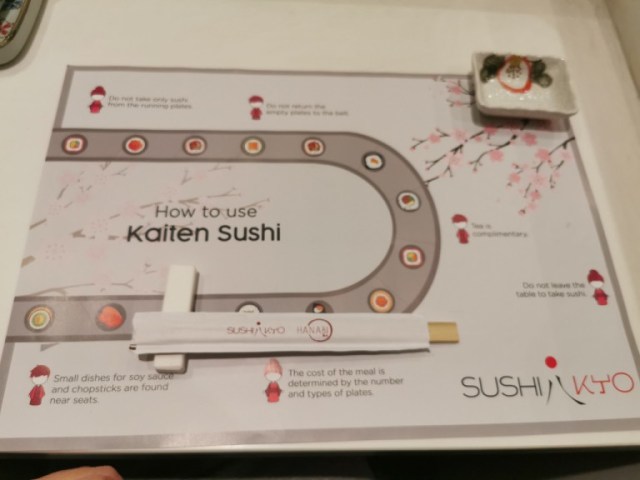
It’s been a little over a year since Ikuna visited this hidden sushi restaurant in the outskirts of New Delhi. She’d hoped to visit India again shortly after returning to Japan, but sadly the pandemic put a stop to those plans rather quickly. Rest assured, though; once it’s safe to travel again, she’ll be flying off to India right away, where she’ll splurge on a night’s stay in the Clarens Hotel so she can visit Sushikyo again. Maybe she’ll make a trip to the new CoCo Ichibanya curry shop, too!
Restaurant Information
Sushikyo
Located inside Clarens Hotel
Plot No. 363-364 Near Huda City Center Metro Station, Sector 29, Gurugram, Haryana 122009, India
Website
Photos © SoraNews24
● Want to hear about SoraNews24’s latest articles as soon as they’re published? Follow us on Facebook and Twitter!

No hay comentarios:
Publicar un comentario